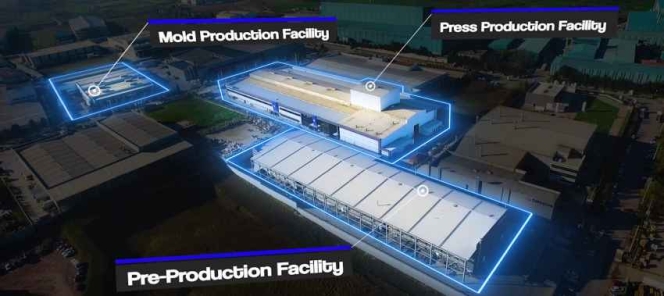
What kind of products does Uzer Makina offer to global tyre industry?
Uzer Makina has been serving top tyre makers all around the world with its tyre curing presses and molds since 1978. Our press product category consists of mechanical and hydraulic presses for all kinds of tyres; while mold category includes tread segments, sidewall plates, container mechanisms, AG molds and bladder molds.
 Tell us about the evolution of the company as a global leader
Tell us about the evolution of the company as a global leader
The company was founded by Selahattin Uzuner and his nephew Bahattin Ertuğ. At first, the company was working for petrochemical industry in Turkey and later on started to make mold maintenance activities for various tyre companies in Kocaeli. First mold was manufactured 1984. Nearly 10 years later, Uzer Makina started to manufacture tyre curing presses again for plants in İzmit. In 2000, the plant was moved to Kartepe, Kocaeli, where it is currently located. In 2004, first hydraulic tyre curing press is manufactured and in 2007 Uzer Makina designed, manufactured and internationally patented its popular product Floating Column Hydraulic Press. Until late 2000s, the company mostly served domestic market. After 2010, we started to supply a good amount of its products abroad as well. With an aggressive growth strategy, Uzer Makina invested in buildings, brand-new equipment, human resources and expanded production in last five years to become a global player in tyre curing equipment market. We now serve top tyre makers and their plants in more than 40 countries.
What is the latest step in your expansion process?
After doubling capacity in 2018 by separating press and mold factory, Uzer Makina has completed another expansion by June 2020. This new facility is entirely dedicated for pre-production activities, including storing steel raw materials, cutting, bending, construction, welding, sandblasting and heat treatment serving both for tyre curing press and mold categories which used to be a part of press manufacturing facility before. Uzer Makina also moved its HQ office from mold factory to press factory.
Investment decision was made at the end of 2019 by the top management before Covid-19 pandemic with the goal of decreasing the costs by decreasing the amount of manufacturing activities which are outsourced. Following this decision, Uzer Makina has acquired 9500 m² land just next to existing press manufacturing facility and finished 6500 m² building in less than 7 months.
Uzer Makina also has added brand-new pre-production equipment like heat treatment furnace, sandblasting machine and bending machine. With these new machinery investment, Uzer Makina is planning to decrease the cost per product and production time while increasing the total quality of the processes by taking these operations in house rather than outsourcing them.
This expansion enables Uzer Makina to better use the existing press manufacturing facility. Since pre-production occupied a good amount of space before leaving the building, remaining place is now used for press manufacturing and assembly. Therefore, Uzer Makina is able to manufacture more presses at the same time compared to previous set-up. Uzer Makina has also made machinery investments for existing press area as well including automated spray-painting booth for painting press bodies/parts and vertical turning machine with 3 meters turning diameter which would mainly be used for parts of bigger (over 85”) mechanical presses.

What are the features of the new SUV & TBR Floating Column Hydraulic Press?
A new era for SUV & TBR tyre curing has begun as Uzer Makina announced the development of SUV & TBR version of its most popular and internationally patented Floating Column Type Hydraulic Press in the last Tyre Technology Expo. Uzer Makina dispatched the first 65” Floating Column Hydraulic Type Curing Press at the end of 2020. This new version outweighs the existing solution Frame Type which used to be the industry standard almost in every aspect. It offers a simpler design, the construction weights much less, has fewer components, maintenance requirements are lower and finally the energy requirement is lesser compared to Frame Type. Besides, most importantly, pricewise there is no significant difference between these two types.
 On the other hand, tyre manufacturers will be able to benefit all the advantages of the internationally patented Floating Column Technology for curing of larger tyres. Floating Column Technology provides fully automatic mold height adjustment and therefore eliminates the need for conventional mold height adjustment systems. The technology features two squeezing cylinders under the columns on both sides of each cavity. The piston rods of these cylinders are directly connected to the columns. Besides applying squeezing force, these cylinders also change the position of the locking point, which is located on the columns for adjustment of mold height. Therefore, the press does not need multiple locking points and can work perfectly well with just one. Columns rise at the end of each cycle and release the locking plates from grooves, meaning the locking mechanism can work without jamming.
On the other hand, tyre manufacturers will be able to benefit all the advantages of the internationally patented Floating Column Technology for curing of larger tyres. Floating Column Technology provides fully automatic mold height adjustment and therefore eliminates the need for conventional mold height adjustment systems. The technology features two squeezing cylinders under the columns on both sides of each cavity. The piston rods of these cylinders are directly connected to the columns. Besides applying squeezing force, these cylinders also change the position of the locking point, which is located on the columns for adjustment of mold height. Therefore, the press does not need multiple locking points and can work perfectly well with just one. Columns rise at the end of each cycle and release the locking plates from grooves, meaning the locking mechanism can work without jamming.
In addition to these, Uzer Makina is able to construct this new size Floating Column Type Hydraulic Press as V-Shape as well in order to save space. The V-Shape design enables tyre manufacturers to use the curing press area at least 12% more efficiently, in other words, tyre producers would be able to place 112 curing presses in an area that was previously large enough for 100 machines. This concept was developed by Uzer Makina engineers in response to the recent market demand for upgrading existing machines in tyre production plants.
On the other hand, Uzer Makina have been recently putting so much effort to increase energy efficiency on the presses and therefore help tyre manufacturers to comply with the latest European regulations. With this object in mind, Uzer Makina has developed “Energy Saver Steam Hoses” as a subsidiary product that would work both with Uzer Makina presses and others. With these hoses, one can save up to 5% energy per press which is equal huge amount of energy considering the fact that tyre curing is the most energy consumer process of tyre production. These hoses also prevent curing area from overheating. In case there is an effort to cool down the area, there is no need for it or at least it requires much less effort to keep the curing area at normal temperature.
 Uzer Makina is not solely a tyre curing press and mold producer – the company also strives to improve the efficiency of the entire curing process. Uzer Makina places great emphasis on digitization and designs its presses to be fully compatible with Industry 4.0 requirements such as EMS, AGV, SCADA, MES and ERP systems. In addition, the company conducts its own research and also works with leading industry companies to offer solutions such as mold pre-heating presses, mold changing pickup cranes and RFID mold management systems – to help tyre manufacturers achieve the most efficient curing processes.
Uzer Makina is not solely a tyre curing press and mold producer – the company also strives to improve the efficiency of the entire curing process. Uzer Makina places great emphasis on digitization and designs its presses to be fully compatible with Industry 4.0 requirements such as EMS, AGV, SCADA, MES and ERP systems. In addition, the company conducts its own research and also works with leading industry companies to offer solutions such as mold pre-heating presses, mold changing pickup cranes and RFID mold management systems – to help tyre manufacturers achieve the most efficient curing processes.
How did the company take on the pandemic?
Even though pandemic conditions were very challenging for tyre industry especially in terms of demand last year, 2021 is very promising also for Uzer Makina. There are many reasons for this: firstly, because of US tariffs against Asian tyre makers, Turkey & Eastern Europe has become a very attractive country for capacity increase for tyre production. Almost all tyre makers in Turkey runs at full capacity and some of them already is expanding. Secondly, there has been a global change in transportation as many people now prefers to move more individually than ever, this probably will eventually affect the number of tyres produced globally. Uzer Makina started to feel this rebound in the demand as many existing customers has decided to restart their previously on hold orders and requesting inquiries for new equipment, and it is also a known fact that quite a few tyre makers are making new greenfield & expansion projects. As Uzer Makina continues to improve its reputation in the market year by year, this rebound will have much more positive effect on the company.
In the pandemic period, like all other companies, Uzer Makina also had to transform the way to operate business into more digital. Now in Uzer Makina, all internal meetings are video meetings. Since travelling abroad is still an issue, nearly all the meetings with customers and suppliers are done via video calls too. Uzer Makina enriched the content of the installation and commissioning materials and provided remote support in order to help the customers which cannot accept people to their plants because of travelling bans. (TT)

- Yokohama Rubber
- GEOLANDAR X-AT
- All-Terrain Tyres
- Racing Tyres
- FIA Extreme H World Cup
- Hydrogen-Powered Motorsport
Yokohama Rubber To Power FIA Extreme H World Cup With GEOLANDAR Tyres
- By TT News
- September 12, 2025
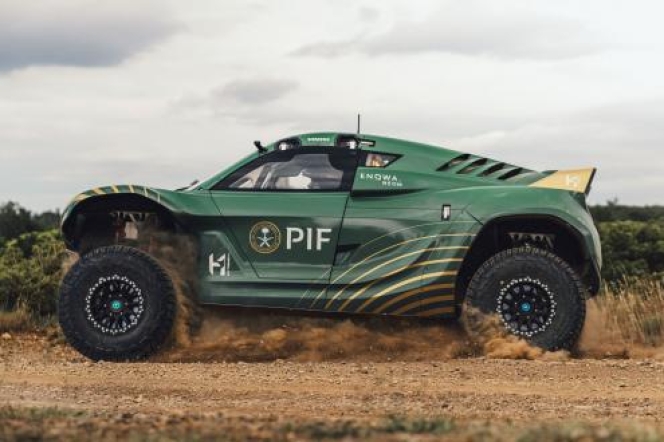
The Yokohama Rubber Co., Ltd. has been selected as the official tyre supplier for the groundbreaking FIA Extreme H World Cup, the world's first hydrogen-powered motorsport series. The company will supply its GEOLANDAR brand of tyres for the championship, which is scheduled to commence next month in Saudi Arabia. The company will also continue to supply GEOLANDAR tyres for the Extreme E off-road electric vehicle series, which holds its final event on 4–5 October in Saudi Arabia.
Central to both the Extreme H and Extreme E series is a shared mission to advance sustainability and equality. The championships serve as dynamic platforms to promote environmental awareness and demonstrate cutting-edge technologies while also enforcing a strict mandate for gender parity by requiring each team to field one male and one female driver. The Extreme H series will feature eight international teams operating the Pioneer 25, a cutting-edge hydrogen fuel cell vehicle capable of generating 550 horsepower and accelerating from 0 to 100 kmph in 4.5 seconds. The global significance of this new championship is expected to draw a worldwide television audience across multiple continents.
As the predecessor to Extreme H, the Extreme E series utilised the high-performance all-electric Odyssey 21 vehicle. All teams competing in the new hydrogen series will also participate in this final Extreme E event, marking the conclusion of the electric championship as it transitions towards a hydrogen future.
In alignment with the environmental principles of these series, Yokohama Rubber will provide a specially developed prototype tyre based on its GEOLANDAR X-AT model. This tyre has been engineered with a significantly increased ratio of sustainable materials, comprising 38 percent renewable and recycled content. It has also been fortified with enhanced durability characteristics to withstand the unique demands of heavy hydrogen-powered and electric off-road racing vehicles.
Hankook Tire Unveils Future Mobility Innovations At 'Design Innovation Day 2025'
- By TT News
- September 12, 2025
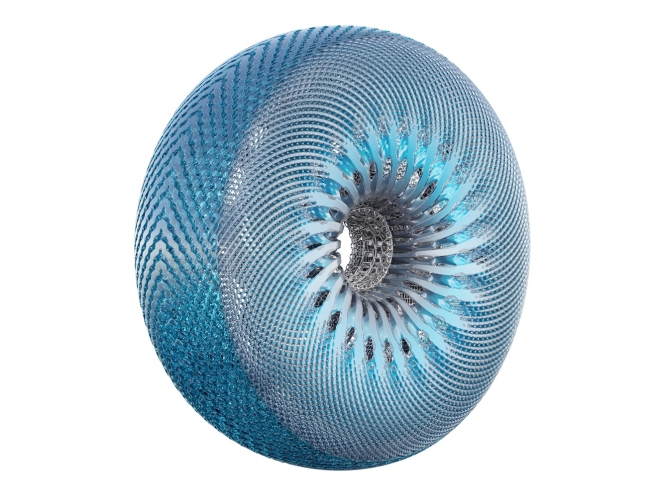
Hankook Tire is advancing its future mobility leadership through strategic open innovation and collaborative design projects. This effort was showcased at the company’s recent Design Innovation Day 2025, held at its Pangyo Technoplex headquarters. The event serves as a platform to present new solutions integrating sustainability, innovation and design while reinforcing partnerships with global technology leaders.
A major focus was the unveiling of two key outcomes from Hankook’s ongoing Design Innovation Project. The first was ‘Sustainable Concept Tyre’, an embodiment of the company’s ESG vision. Developed using advanced 3D printing technology, it is constructed from renewable and recycled materials. Its distinctive organic design was realised in collaboration with Harvestance using specialised engineering software.
The second reveal was the WheelBot 2, a multi-directional mobility platform developed with robotics startup CALMANTECH. This advanced robotic wheel system, equipped with tri-axial spherical tyres, demonstrates new possibilities for movement. Its potential was illustrated through a live demonstration of the PathCruizer, a two-seater pod concept powered by the WheelBot technology.
Beyond product reveals, the event highlighted Hankook’s commitment to knowledge sharing, featuring a presentation on 3D printing advancements from LG Electronics. These collaborations are central to Hankook’s strategy of strengthening its technology leadership. Since 2012, the company has partnered with world-renowned design universities and technology firms, consistently earning prestigious international design awards and solidifying the premium stature of its global brand.
CEAT Cuts Tyre Prices Across Portfolio Following GST Rate Reduction
- By TT News
- September 12, 2025
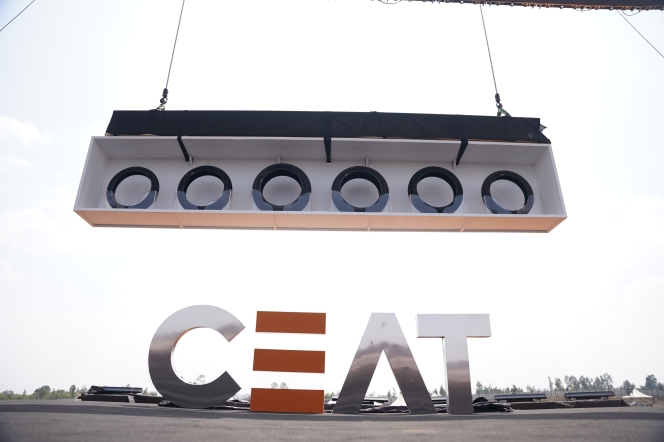
Indian tyre maker to pass full benefit of tax cuts to customers from 22 September
CEAT Limited said on Thursday it would reduce prices across its entire tyre range following the Indian government’s decision to cut goods and services tax (GST) rates on tyres, with the full benefit being passed on to customers.
The Mumbai-based tyre manufacturer said new prices would take effect from 22 September, covering commercial, agricultural, passenger vehicle and two-wheeler segments.
India’s 56th GST Council meeting approved significant reductions in tax rates for the tyre industry. GST on new pneumatic tyres was cut to 18% from 28%, whilst tractor tyres and tubes will attract a reduced rate of 5%.
“We thank the Government of India and the GST Council for their timely and progressive decision to rationalise tax rates in the tyre sector,” said Arnab Banerjee, Managing Director & CEO of CEAT Limited.
“The reduced GST slabs will greatly benefit the tyre industry and consumers alike. Not only will it lower the cost of owning and operating a vehicle for customers across various segments, but by making tyres more affordable to replace, it will also make our roads safer.”
Banerjee added the move would “spur formalisation and greater compliance, while also fostering sustainable growth in the sector.”
The GST rate cuts represent a significant policy shift for India’s automotive sector, where high taxation has been a longstanding concern for manufacturers and consumers.
Yokohama Rubber Recognised As ‘DX Certified Business Operator’ By Japan’s METI
- By TT News
- September 12, 2025
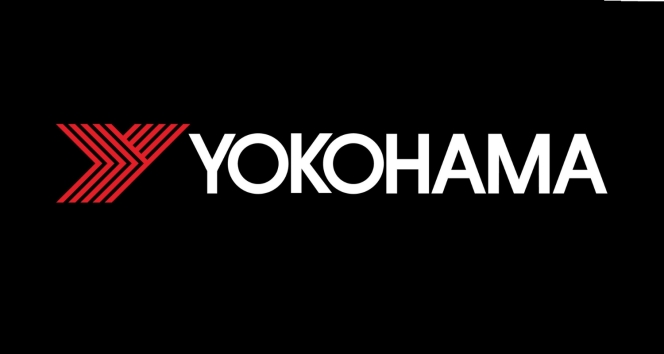
The Yokohama Rubber Co., Ltd. has been officially recognised as a DX Certified Business Operator by Japan's Ministry of Economy, Trade and Industry (METI). The designation, which was granted on 1 September 2025, identifies companies that are thoroughly prepared for digital transformation as outlined by the Digital Governance Code.
This certification acknowledges Yokohama Rubber's comprehensive strategy for digital transformation, which is built on three core objectives: advancing business strategy, contributing to sustainability and reinforcing its IT infrastructure. Central to this effort is the company's proprietary AI framework, HAICoLab (Humans and AI ColLaborate), which drives group-wide digital initiatives. These include improving productivity, innovating processes, developing digital talent and building a global cloud-based IT system. The certification confirms that the company's efforts not only meet METI's stringent criteria but also demonstrate appropriate disclosure of information to its stakeholders.
Moving forward, the company said it will continue to leverage data from its entire value chain to adapt to a dynamic business environment. The company aims to enhance customer value, pursue sustainable innovation and transform its corporate culture to strengthen its competitive position and ensure long-term growth.


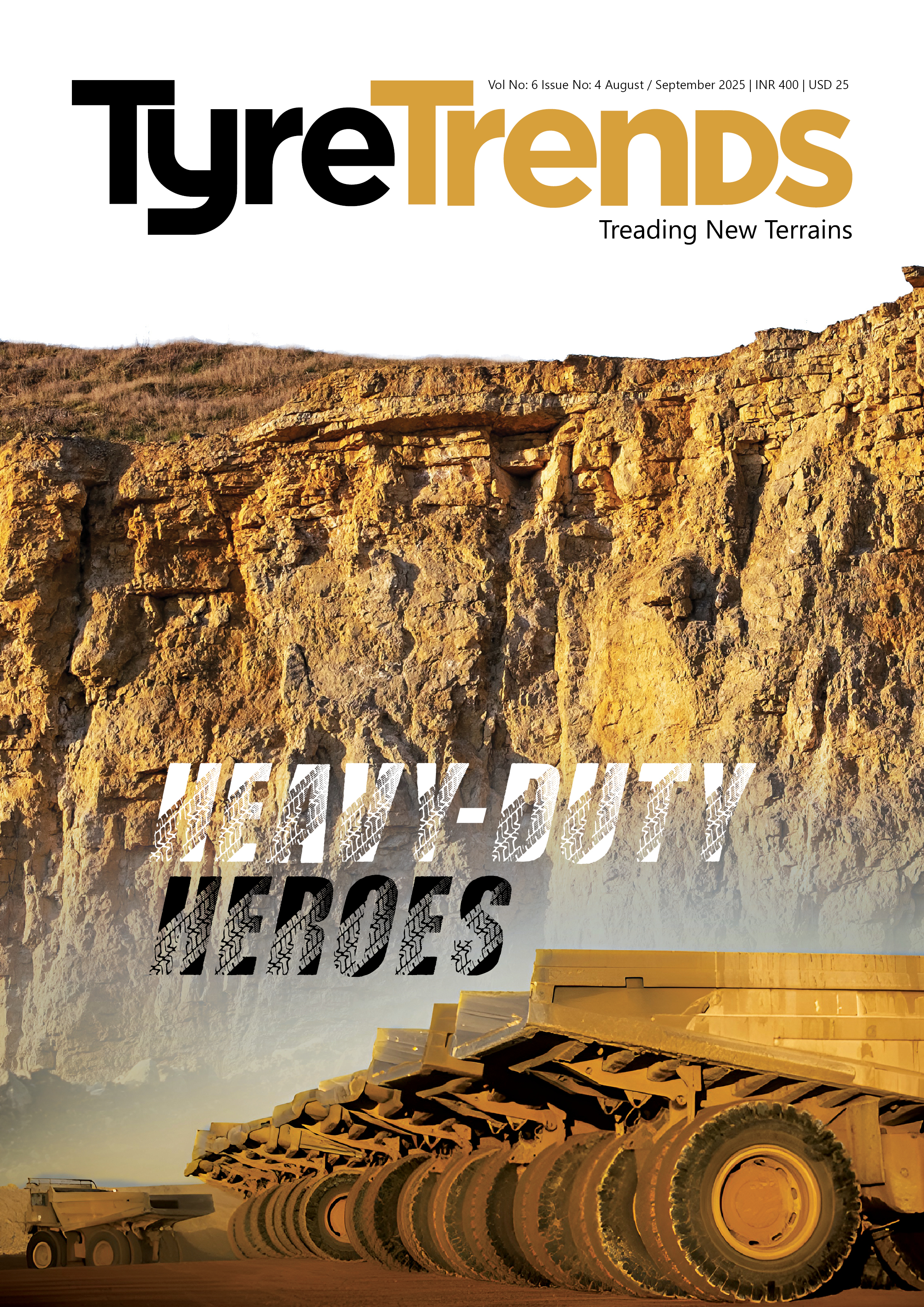
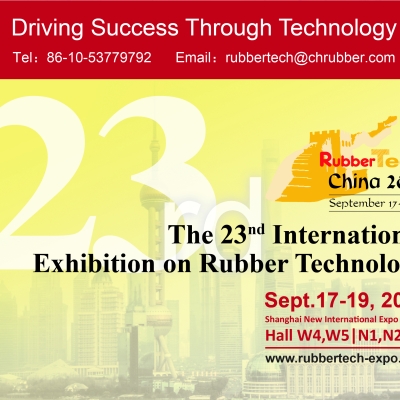


Comments (0)
ADD COMMENT